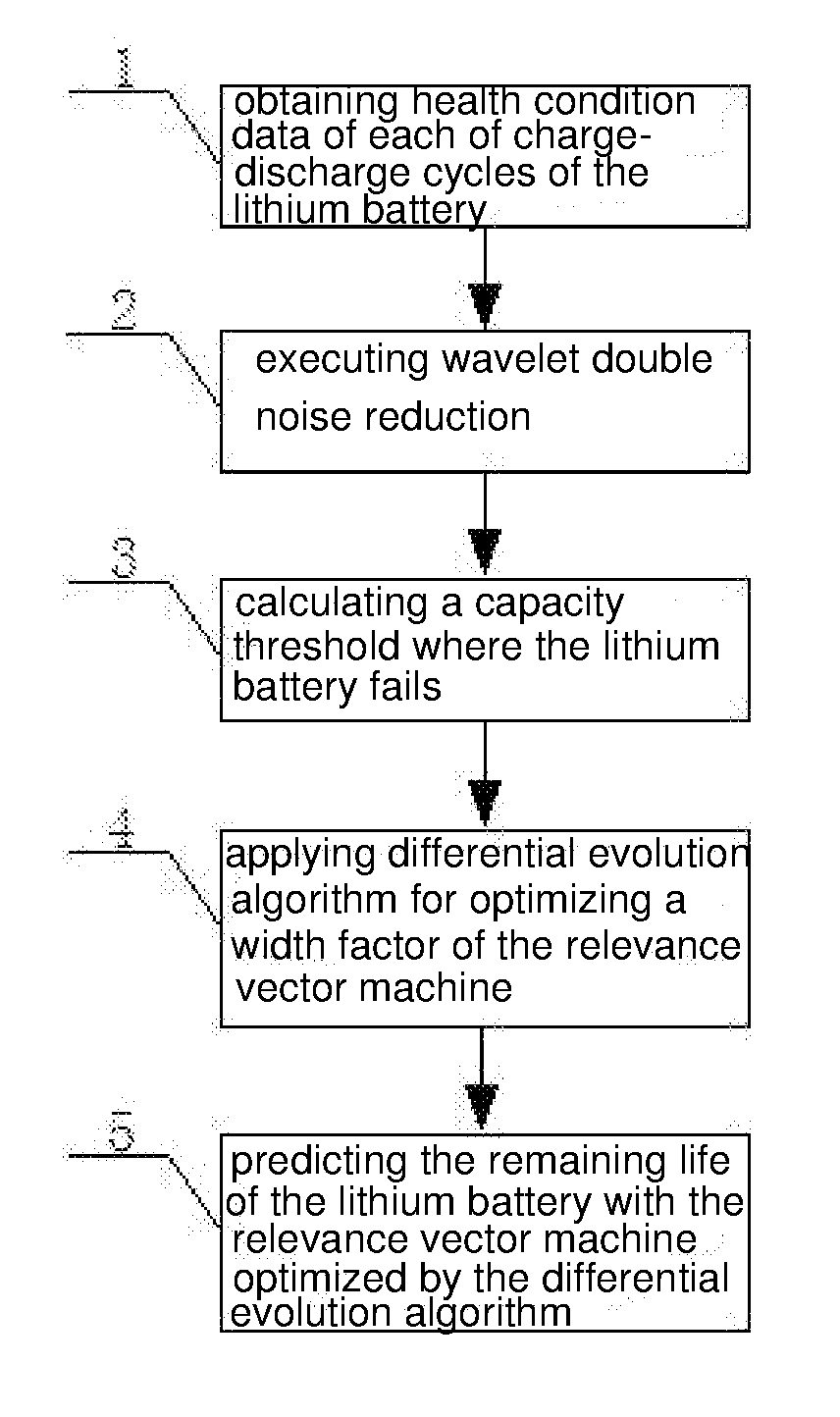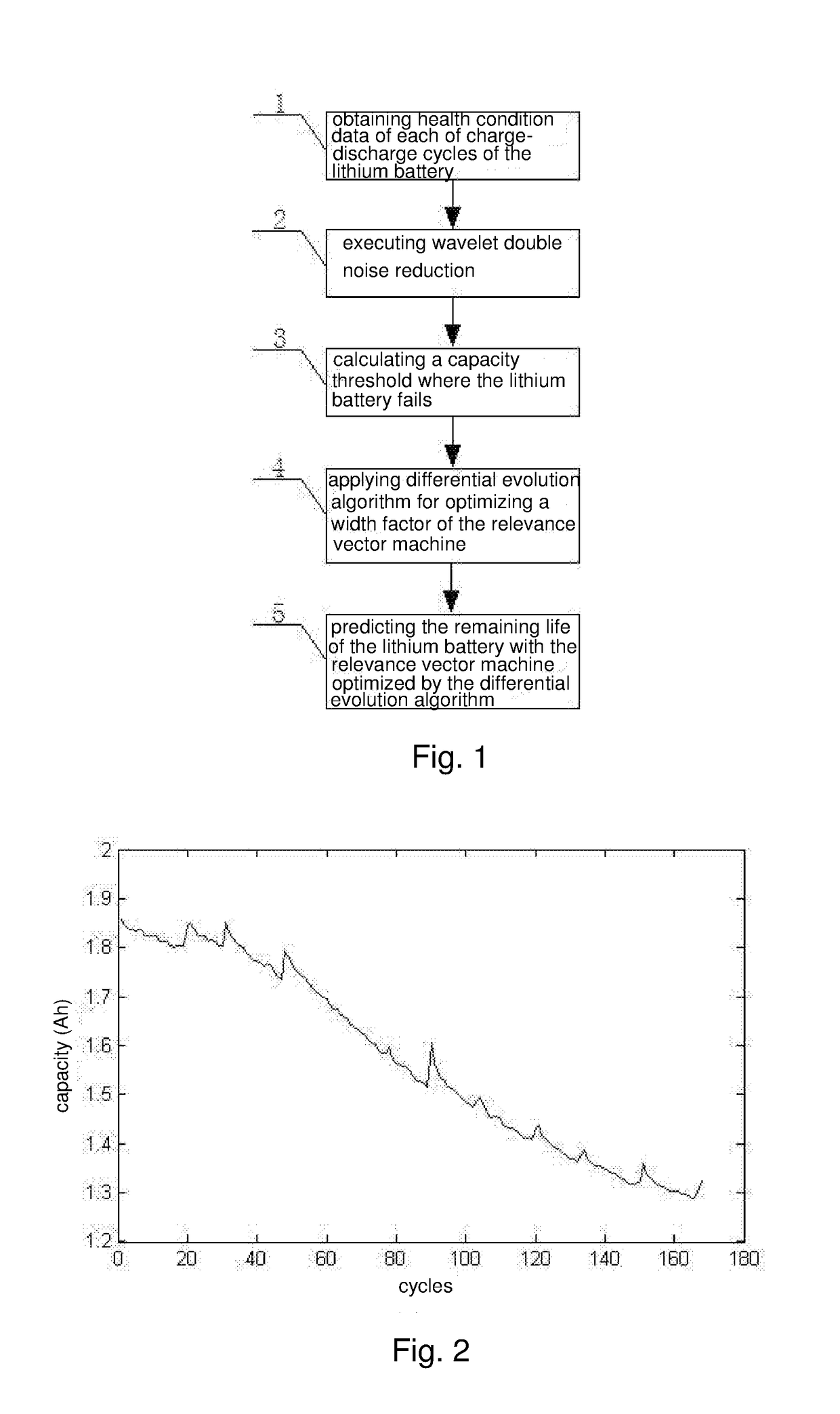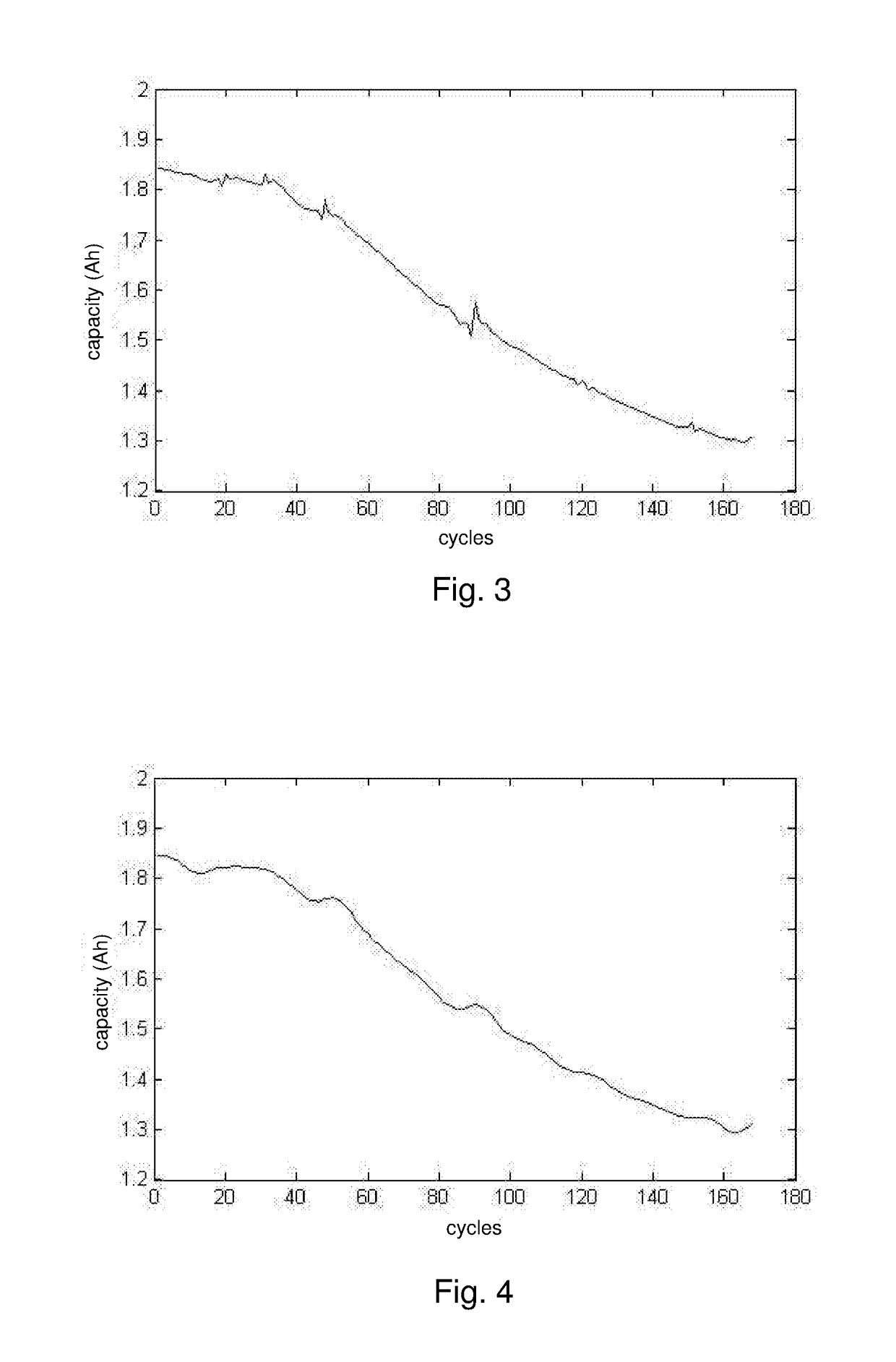Method for predicting remaining useful life of lithium battery based on wavelet denoising and relevance vector machine
a technology which is applied in the field of relevance vector machine and wavelet denoising of the remaining useful life of lithium batteries, can solve the problems of slow response and other electronic failures, inability to accurately predict the battery life, and device performance degradation, so as to achieve significant improvement in prediction accuracy and prediction accuracy. the effect of relevance vector machine algorithm
- Summary
- Abstract
- Description
- Claims
- Application Information
AI Technical Summary
Benefits of technology
Problems solved by technology
Method used
Image
Examples
Embodiment Construction
[0045]Referring to drawings and a preferred embodiment, the present invention is further illustrated.
[0046]Referring to FIG. 1, a flow chart of the present invention comprises five steps of:
[0047]step 1: obtaining health condition data of each of charge-discharge cycles of the lithium battery by measurement;
[0048]step 2: processing capacity data measured of the lithium battery with wavelet double denoising;
[0049]step 3: calculating a capacity threshold where the lithium battery fails;
[0050]step 4: referring to capacity data and charge-discharge cycle data of the lithium battery, applying a differential evolution algorithm for optimizing a width factor of the relevance vector machine; and step 5: predicting the remaining useful life of the lithium battery with the relevance vector machine optimized by the differential evolution algorithm.
[0051]In the step 1, the health condition data of the lithium battery is the capacity data of the lithium battery.
[0052]Obtaining capacity changing ...
PUM
 Login to View More
Login to View More Abstract
Description
Claims
Application Information
 Login to View More
Login to View More - R&D
- Intellectual Property
- Life Sciences
- Materials
- Tech Scout
- Unparalleled Data Quality
- Higher Quality Content
- 60% Fewer Hallucinations
Browse by: Latest US Patents, China's latest patents, Technical Efficacy Thesaurus, Application Domain, Technology Topic, Popular Technical Reports.
© 2025 PatSnap. All rights reserved.Legal|Privacy policy|Modern Slavery Act Transparency Statement|Sitemap|About US| Contact US: help@patsnap.com



